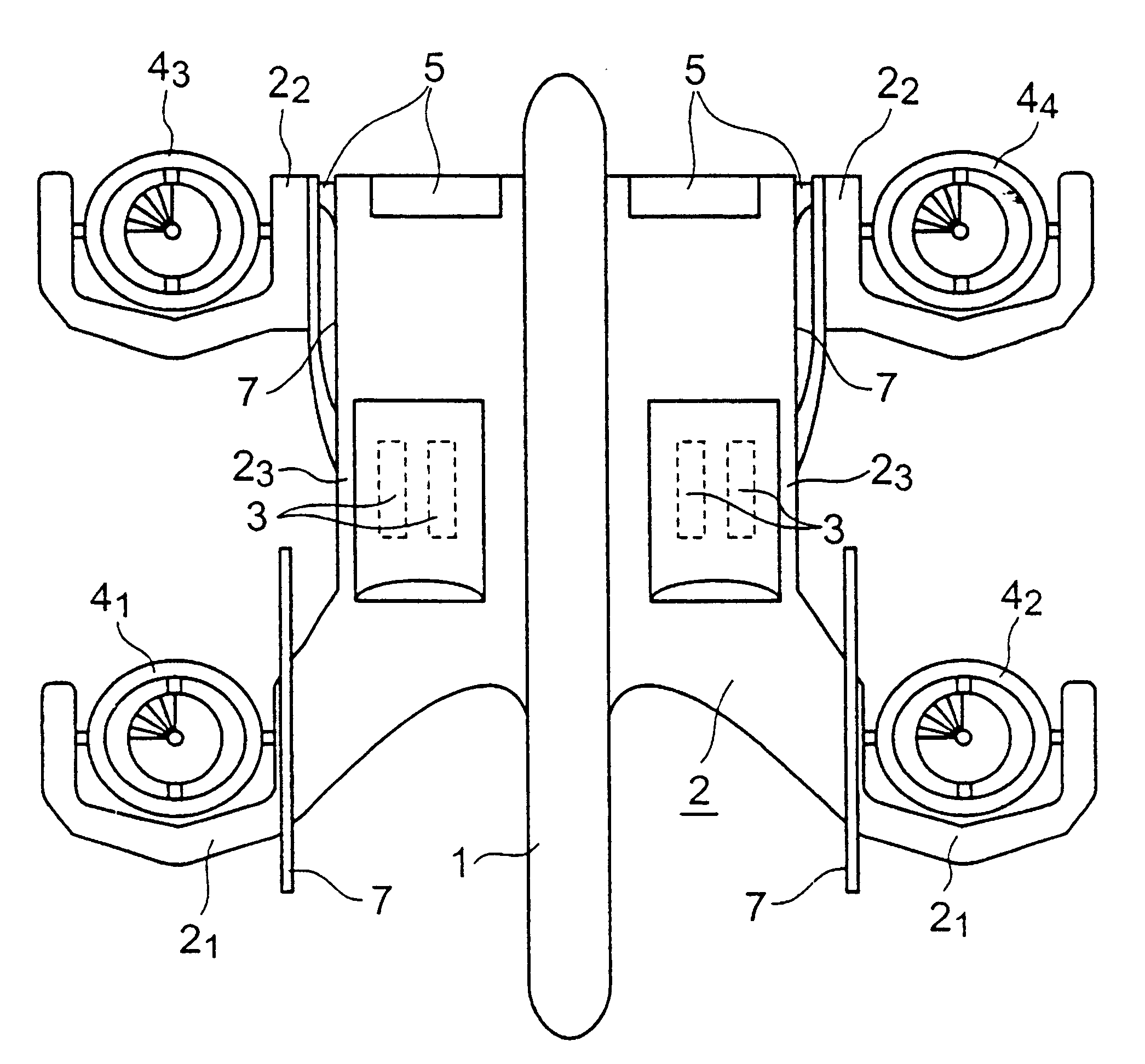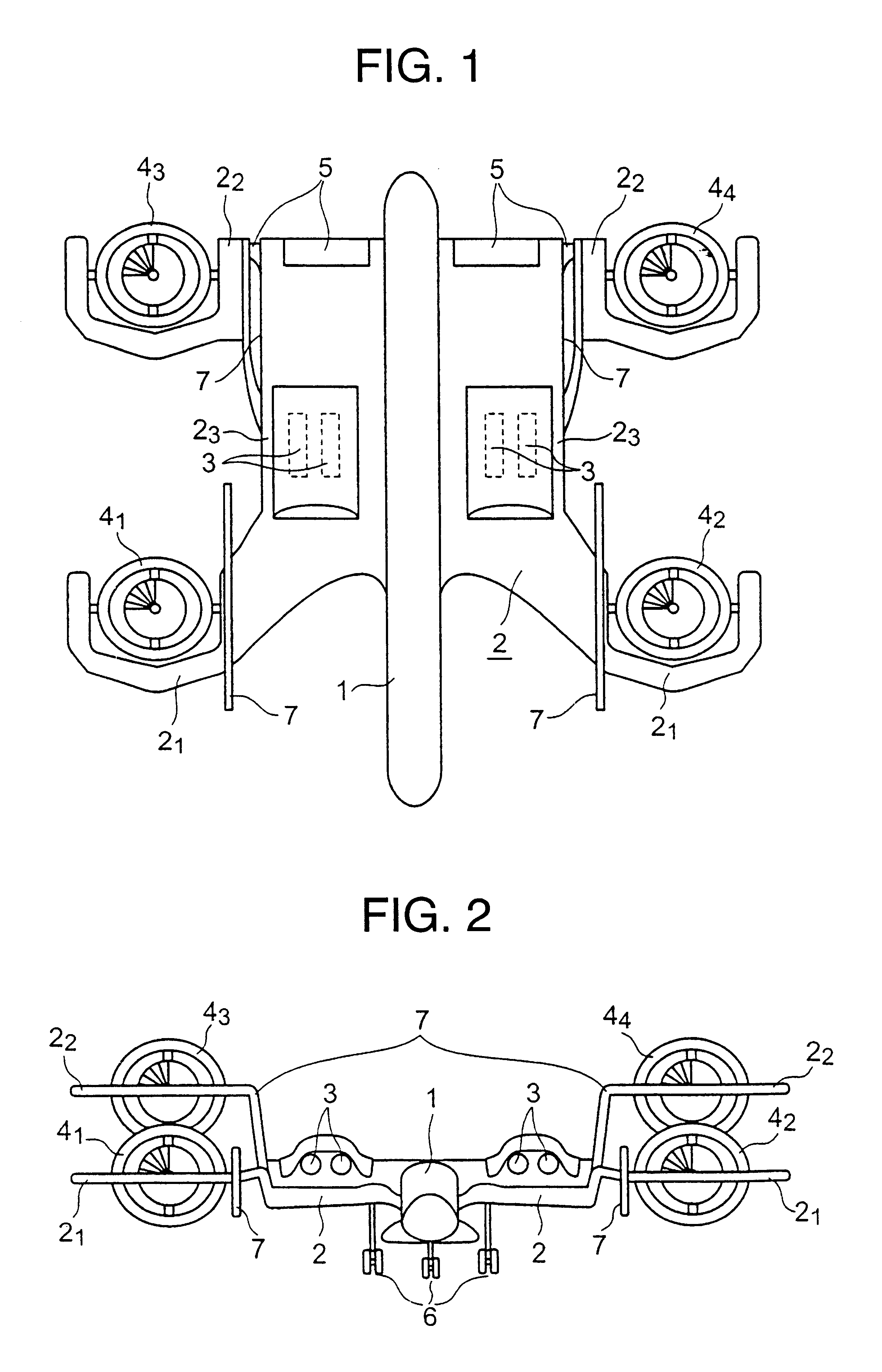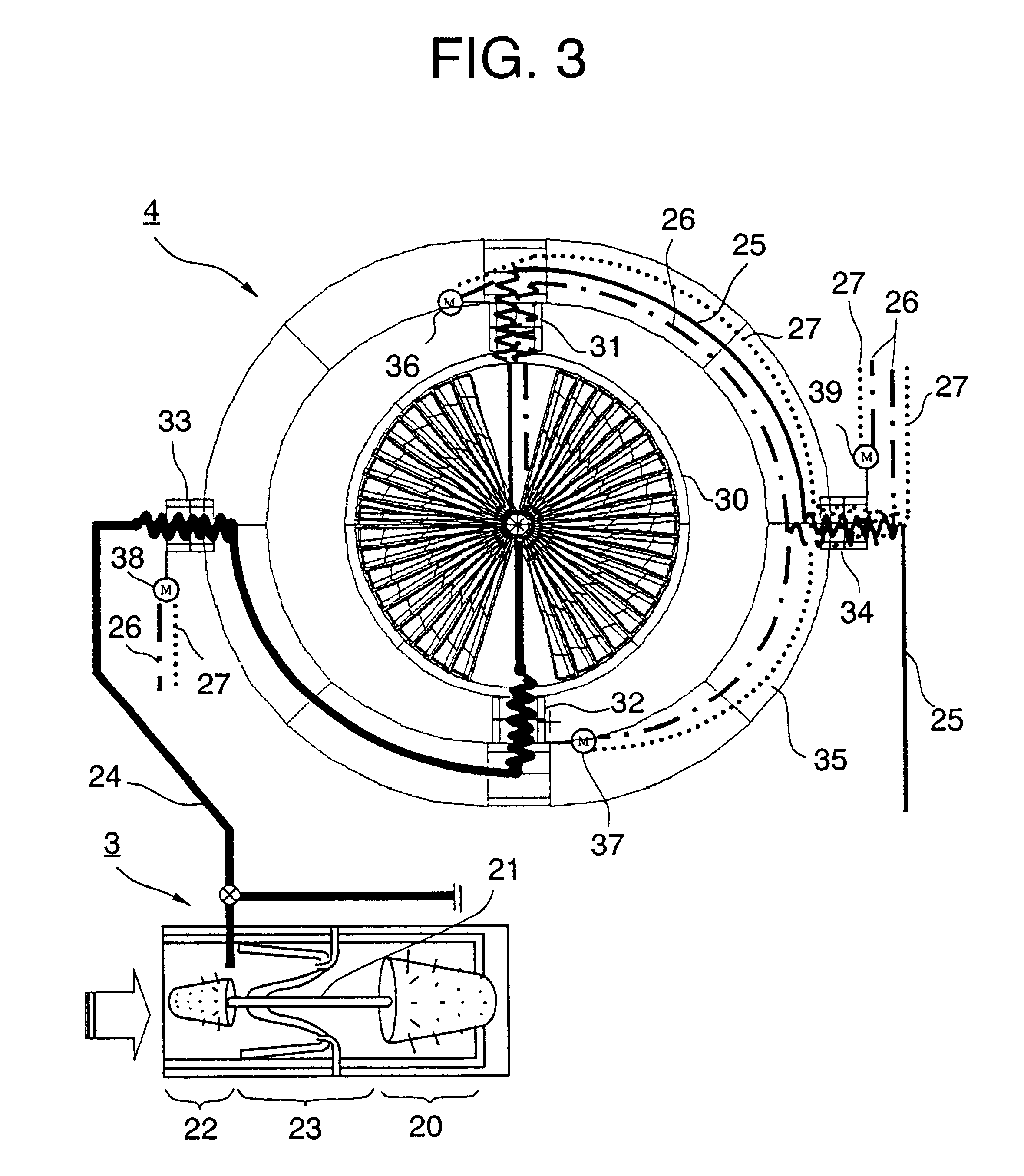Vertical takeoff and landing aircraft
a vertical takeoff and landing and aircraft technology, applied in vertical landing/take-off aircraft, aircraft navigation control, machines/engines, etc., can solve the problems of high cost, difficult to construct an airport near urban areas, and high cost for citizens in small or medium-sized cities, and achieves stable maneuverability and superiority.
- Summary
- Abstract
- Description
- Claims
- Application Information
AI Technical Summary
Benefits of technology
Problems solved by technology
Method used
Image
Examples
Embodiment Construction
[0046]A preferred embodiment of the present invention will now be detailed with reference to the accompanying drawings. It is intended, however, that unless particularly specified, dimensions, materials, relative positions and so forth of the constituent parts in the embodiments shall be interpreted as illustrative only not as limitative of the scope of the present invention.
[0047]FIG. 1 is a top plan view of an embodiment of the VTOL aircraft according to the present invention. FIG. 2 is a front elevation when the tilt fan engines composing propulsion devices are tilted. FIG. 3 is a schematic illustration showing the construction of the core engine and tilt fan engine of the turbo-fan engine with a separate core engine. FIG. 4(A) and FIG. 4(B) are illustrations for explaining the fan engine. FIG. 5 to FIG. 12 are schematic illustrations explaining various states of hovering, cruising, and so on of the VTOL aircraft according to the present invention, and FIG. 13 and FIG. 14 are dra...
PUM
 Login to View More
Login to View More Abstract
Description
Claims
Application Information
 Login to View More
Login to View More - R&D
- Intellectual Property
- Life Sciences
- Materials
- Tech Scout
- Unparalleled Data Quality
- Higher Quality Content
- 60% Fewer Hallucinations
Browse by: Latest US Patents, China's latest patents, Technical Efficacy Thesaurus, Application Domain, Technology Topic, Popular Technical Reports.
© 2025 PatSnap. All rights reserved.Legal|Privacy policy|Modern Slavery Act Transparency Statement|Sitemap|About US| Contact US: help@patsnap.com



